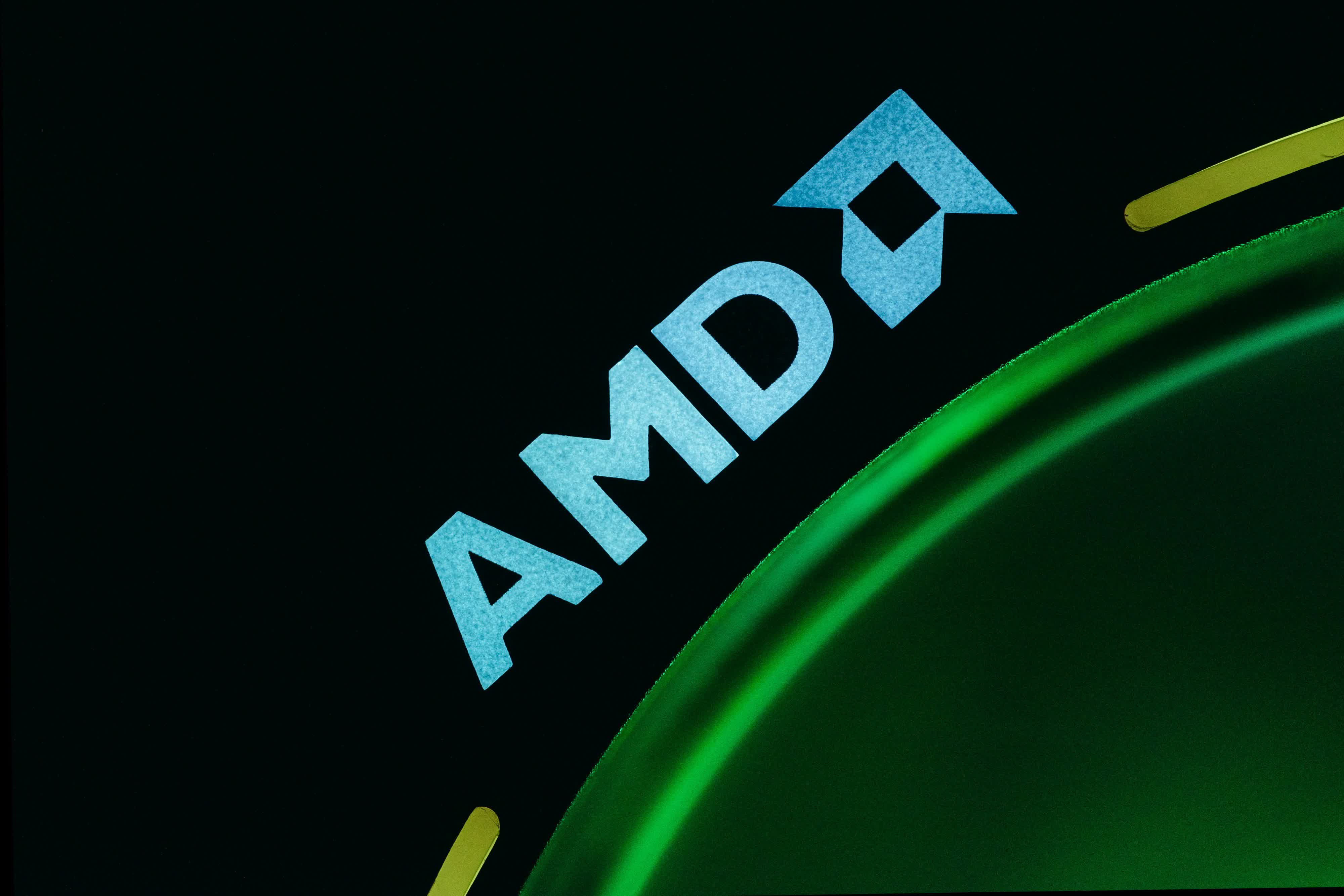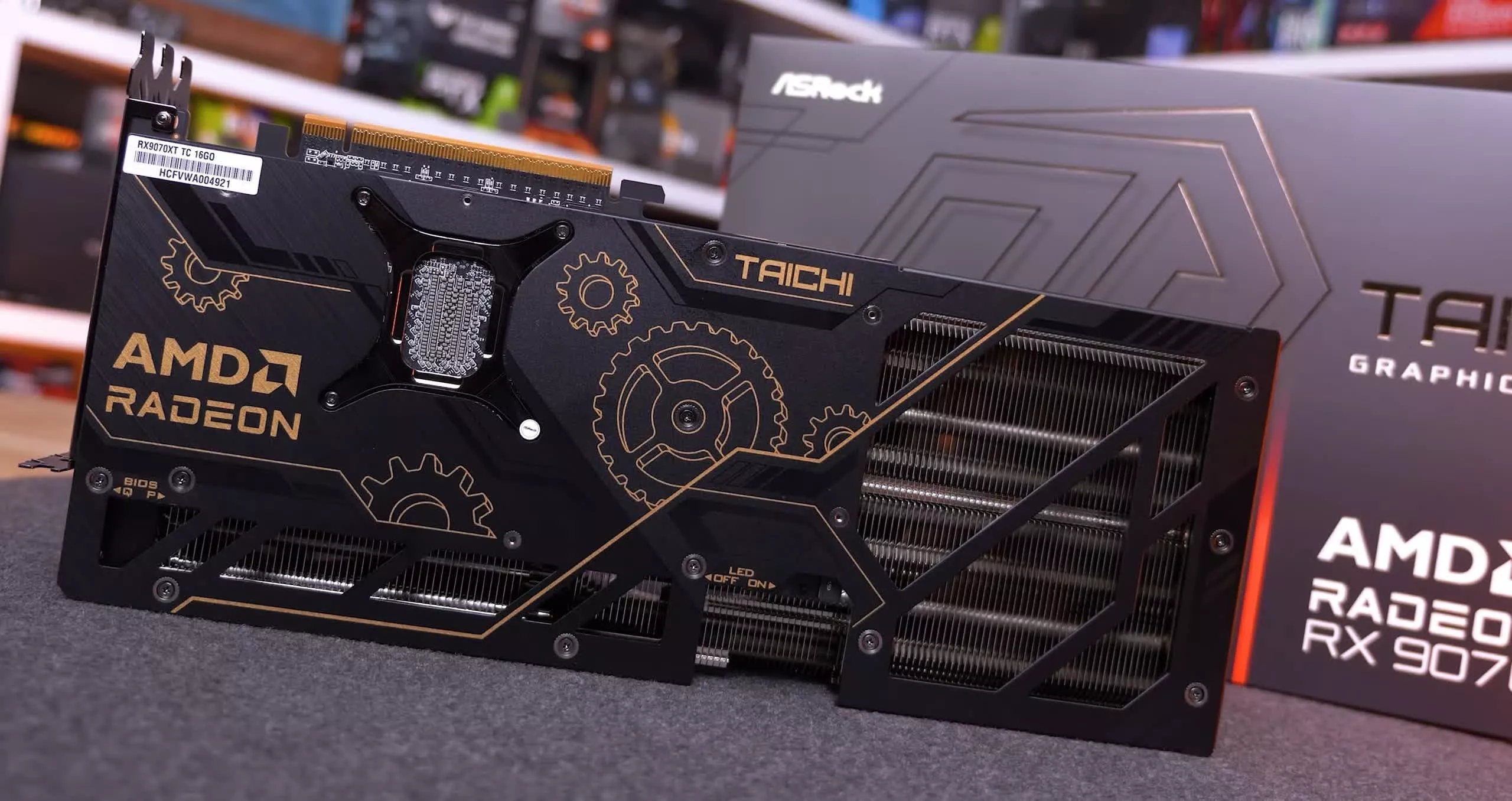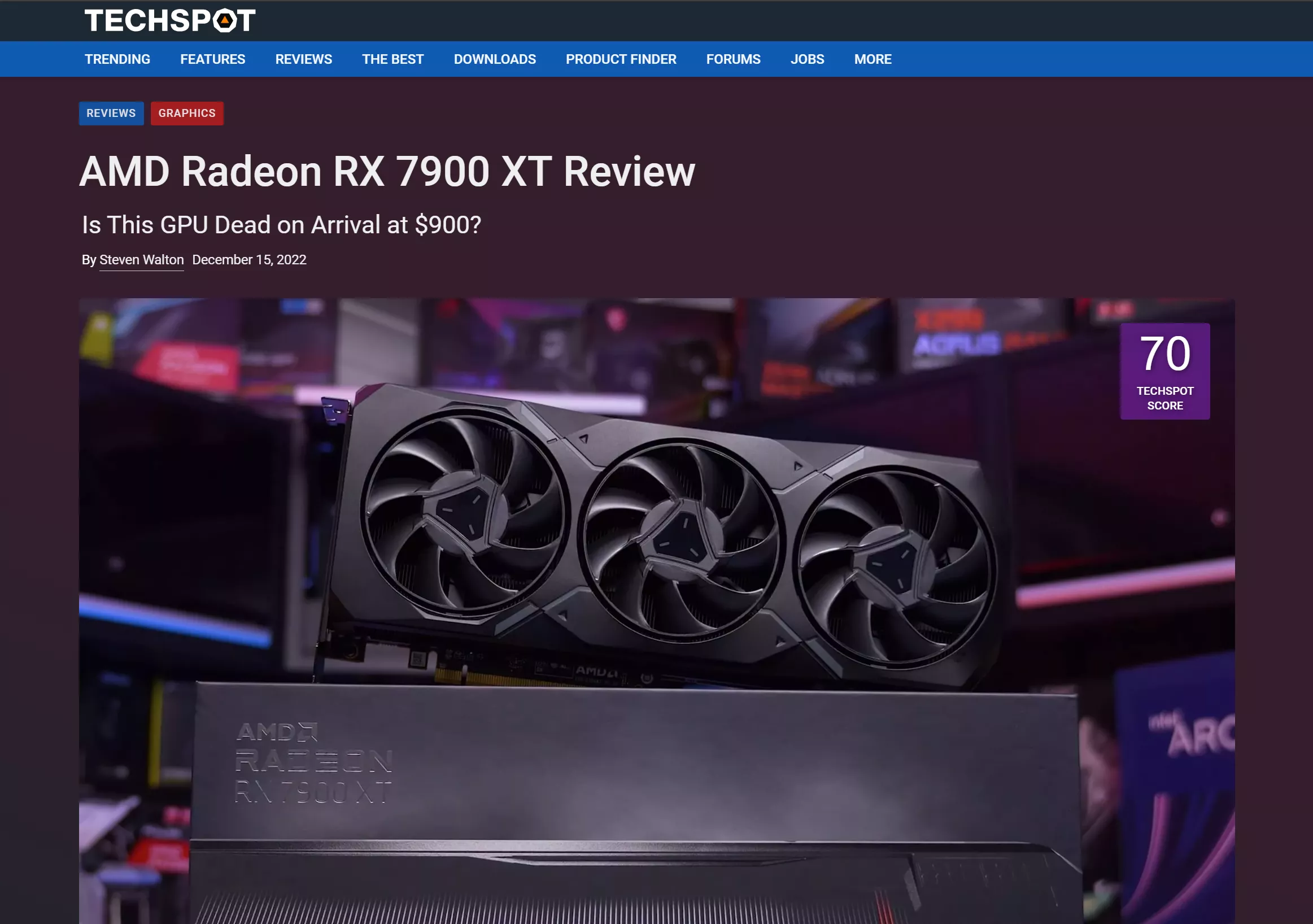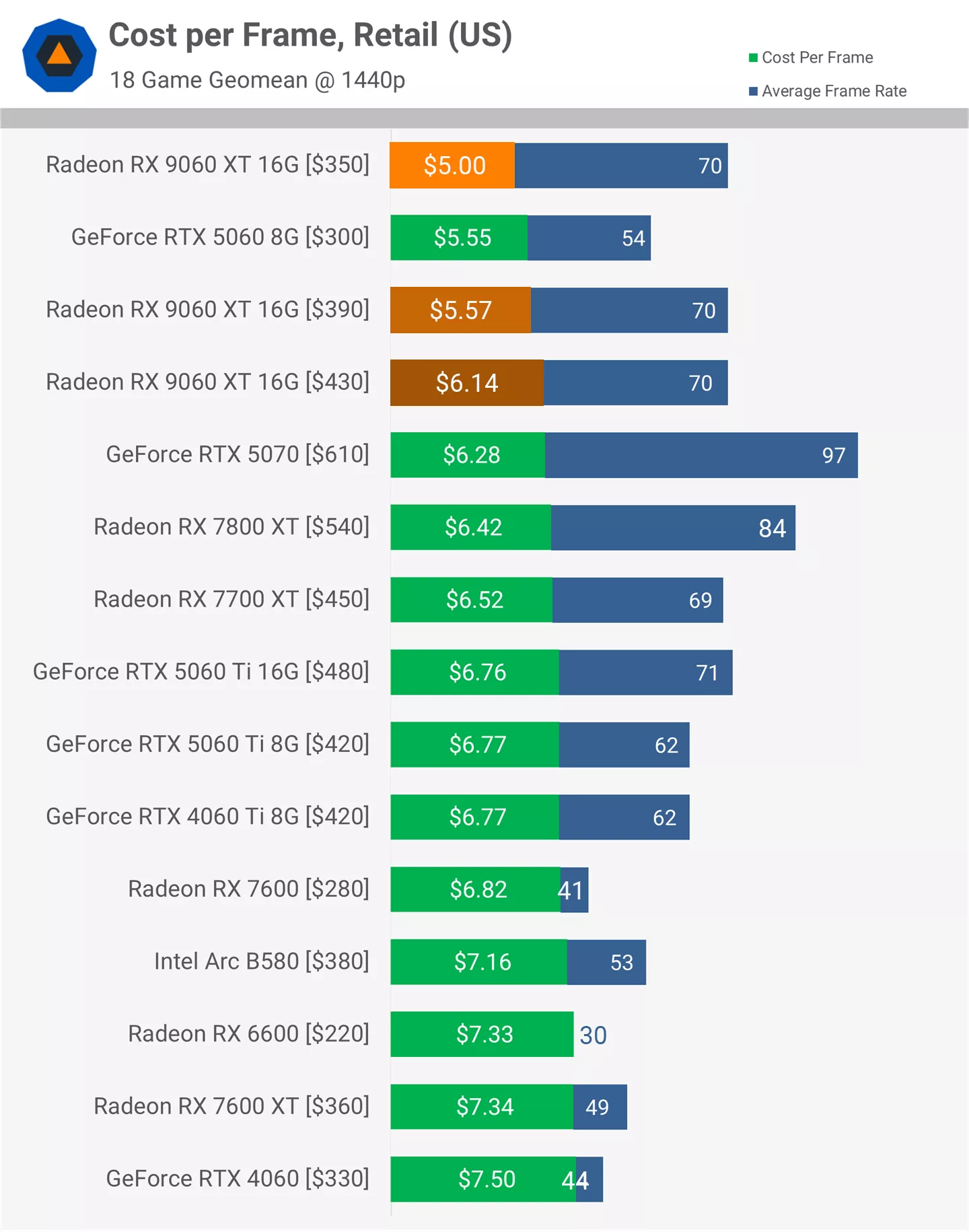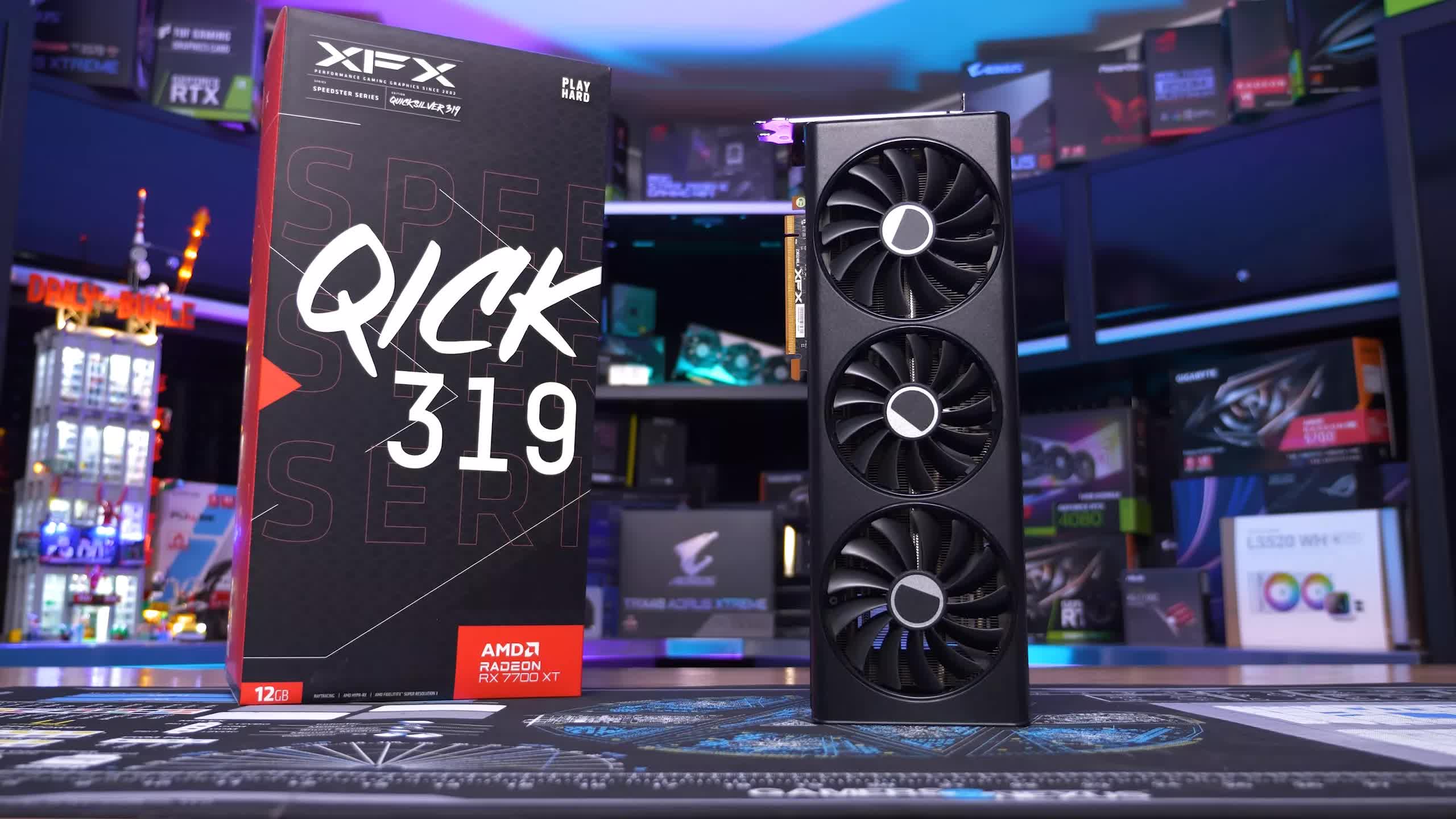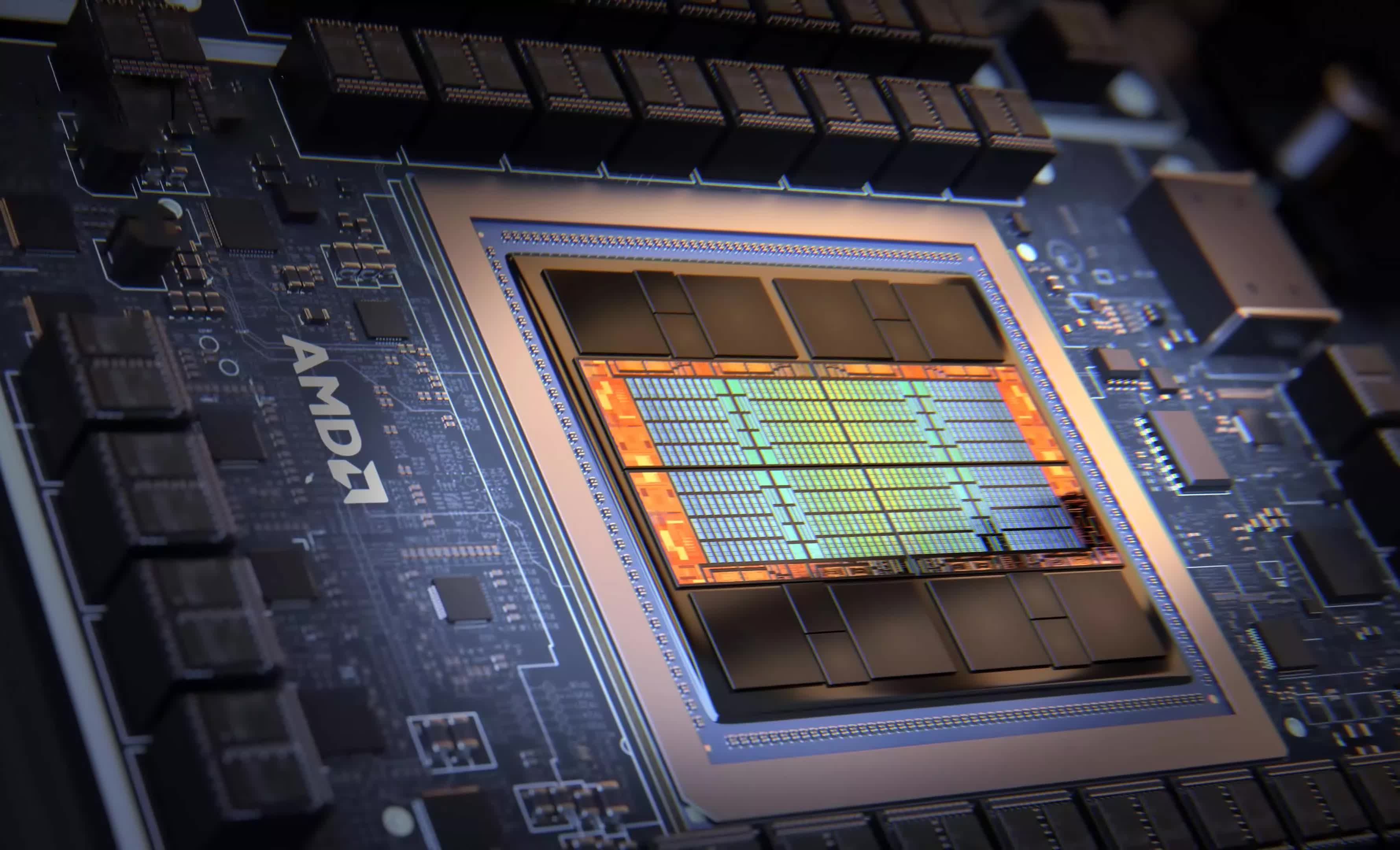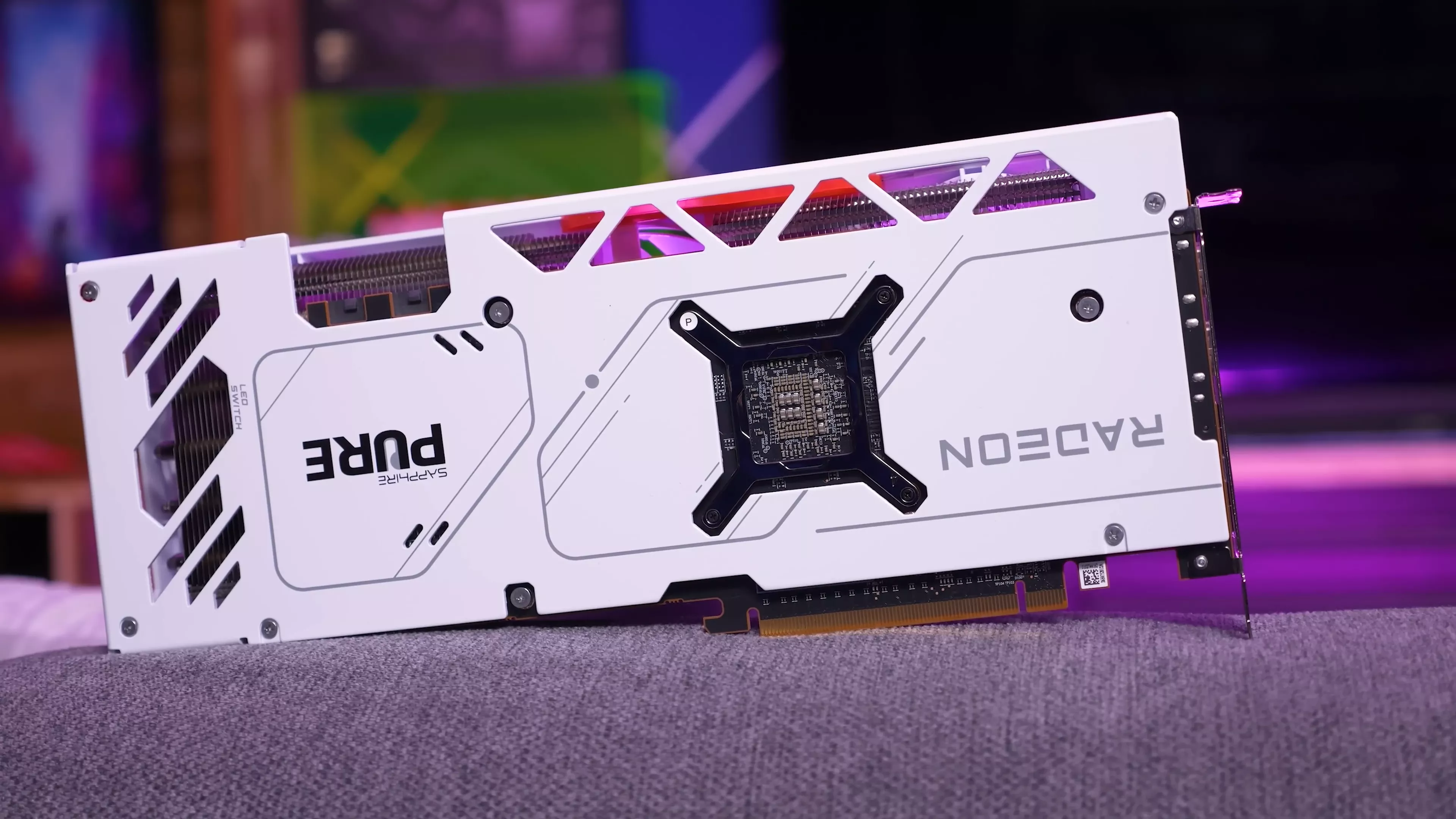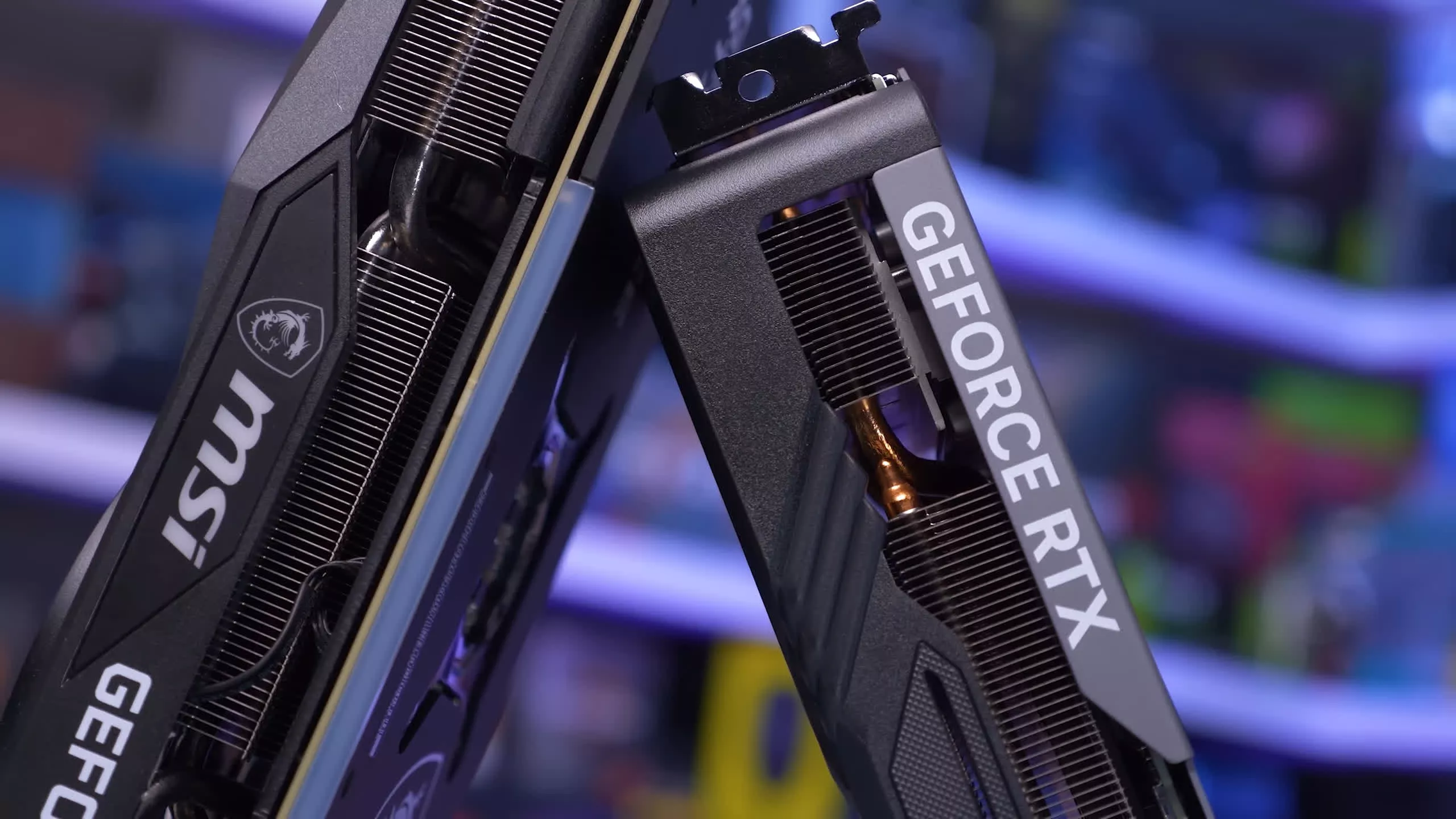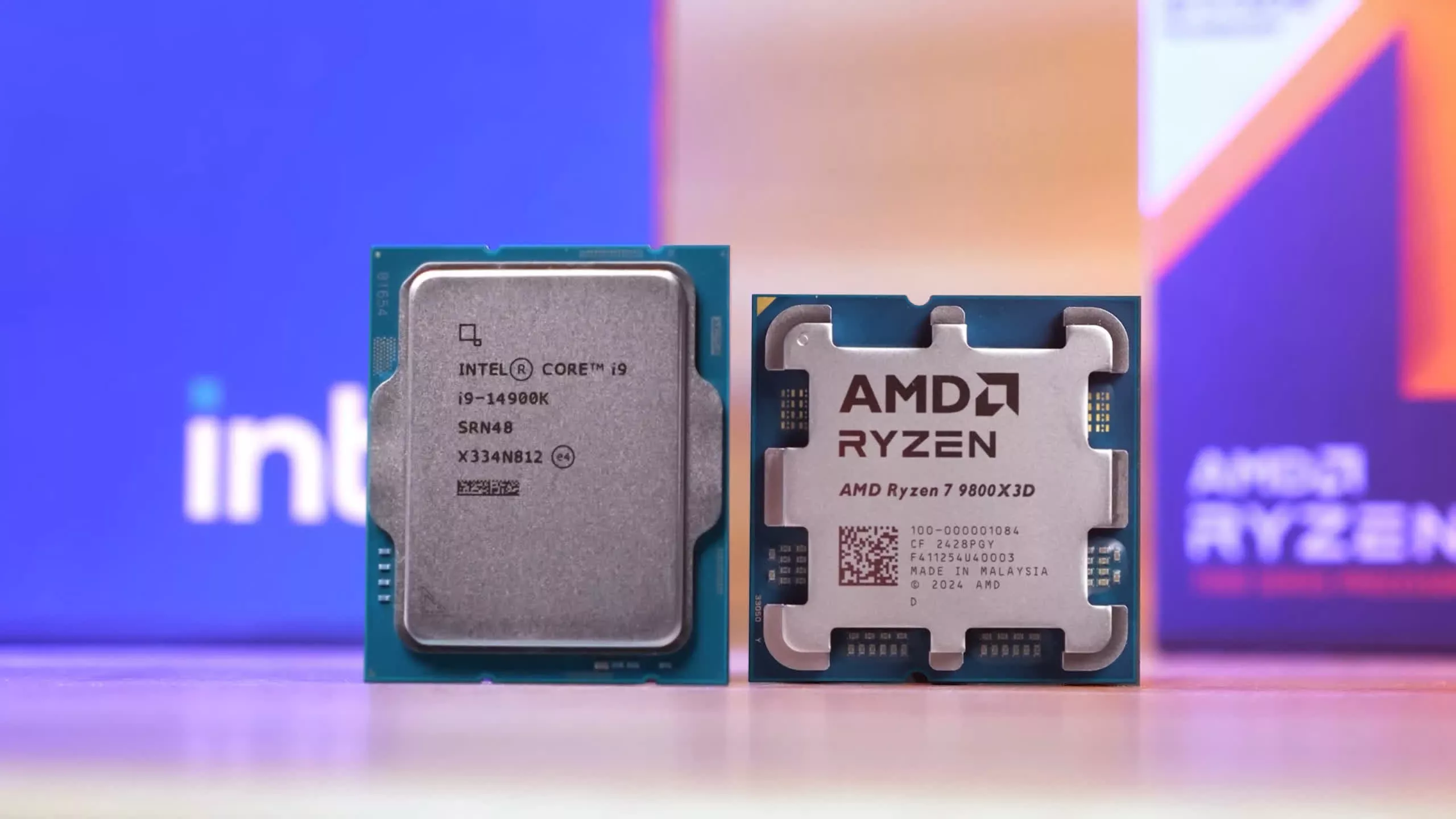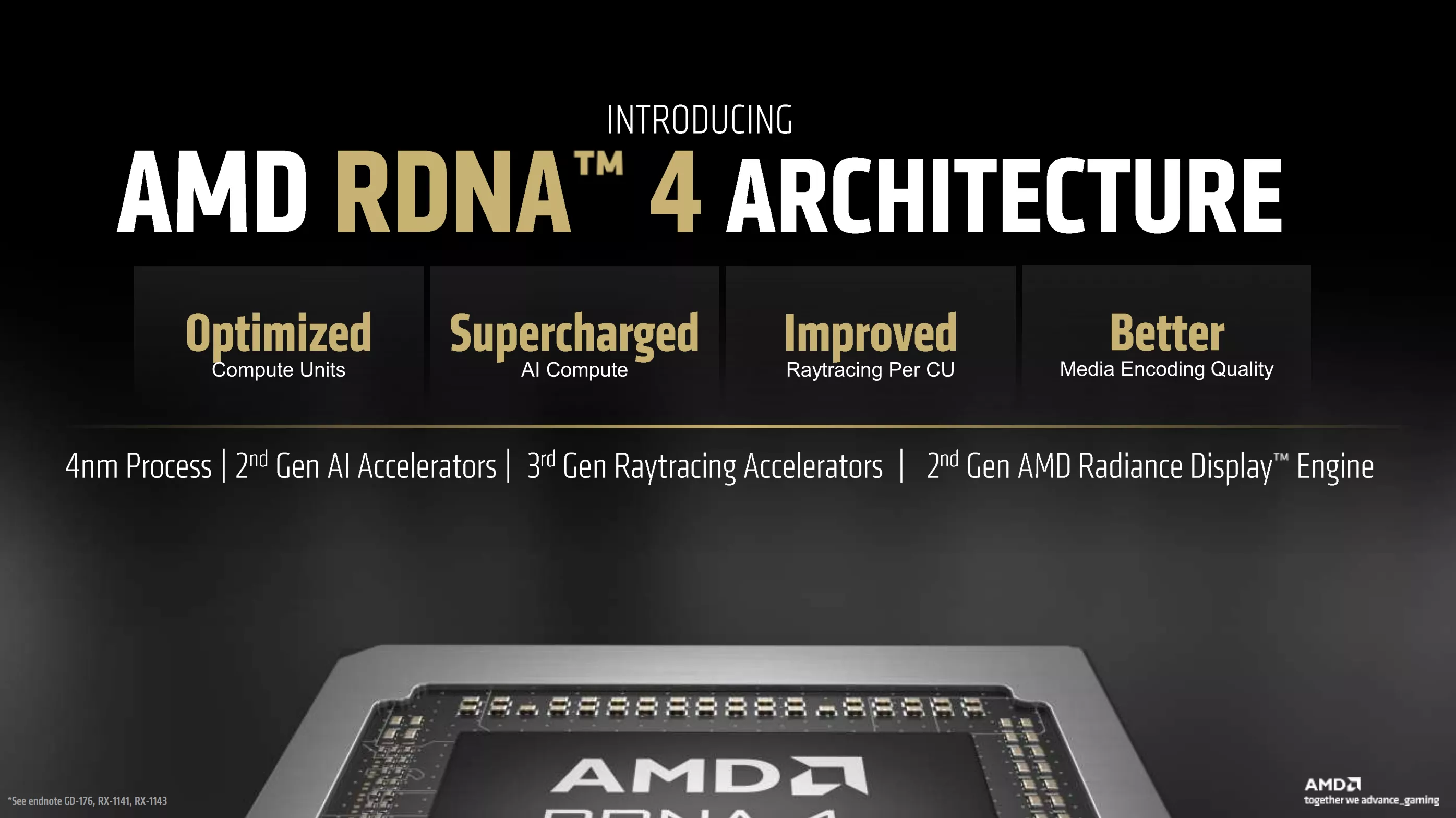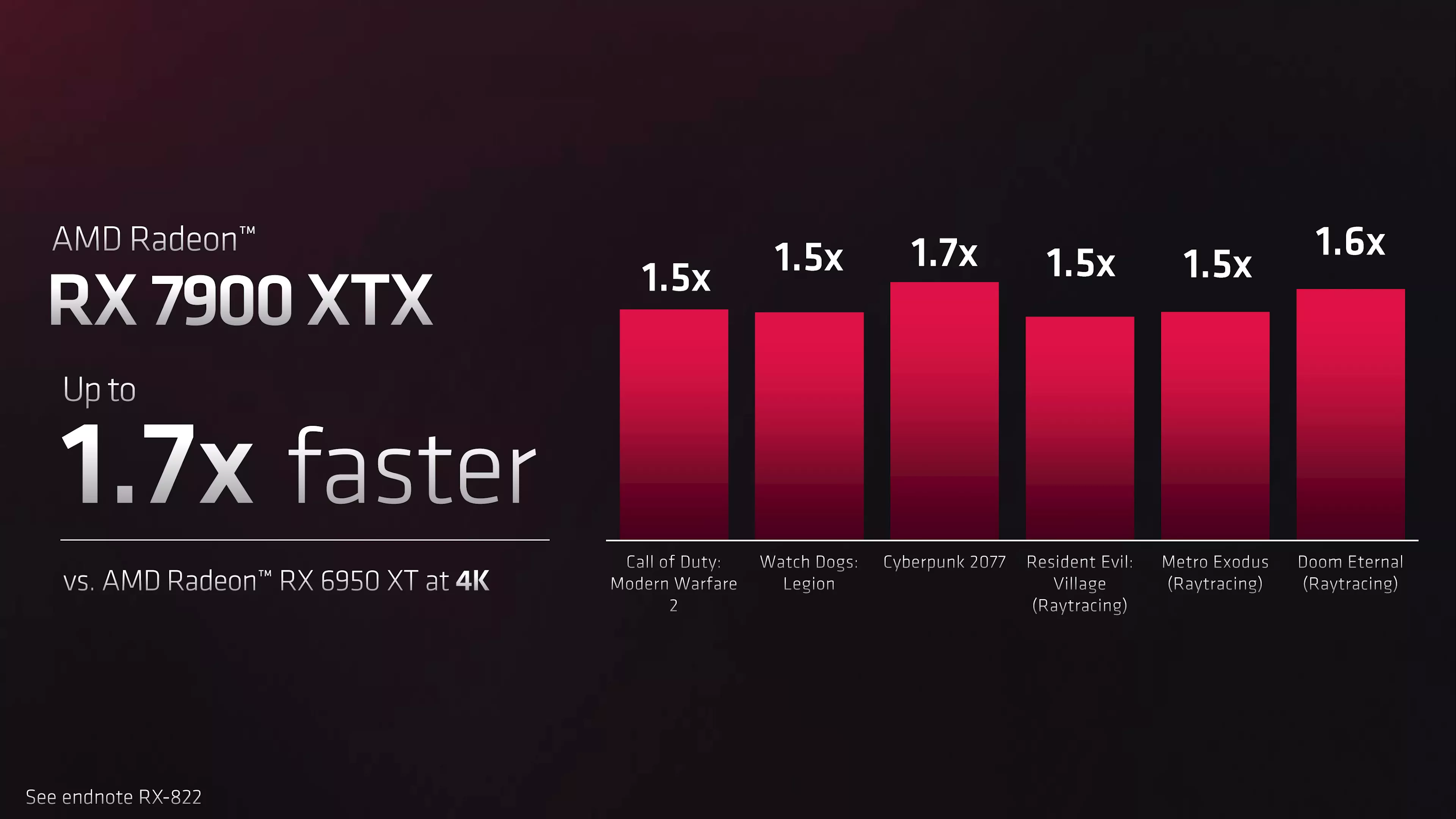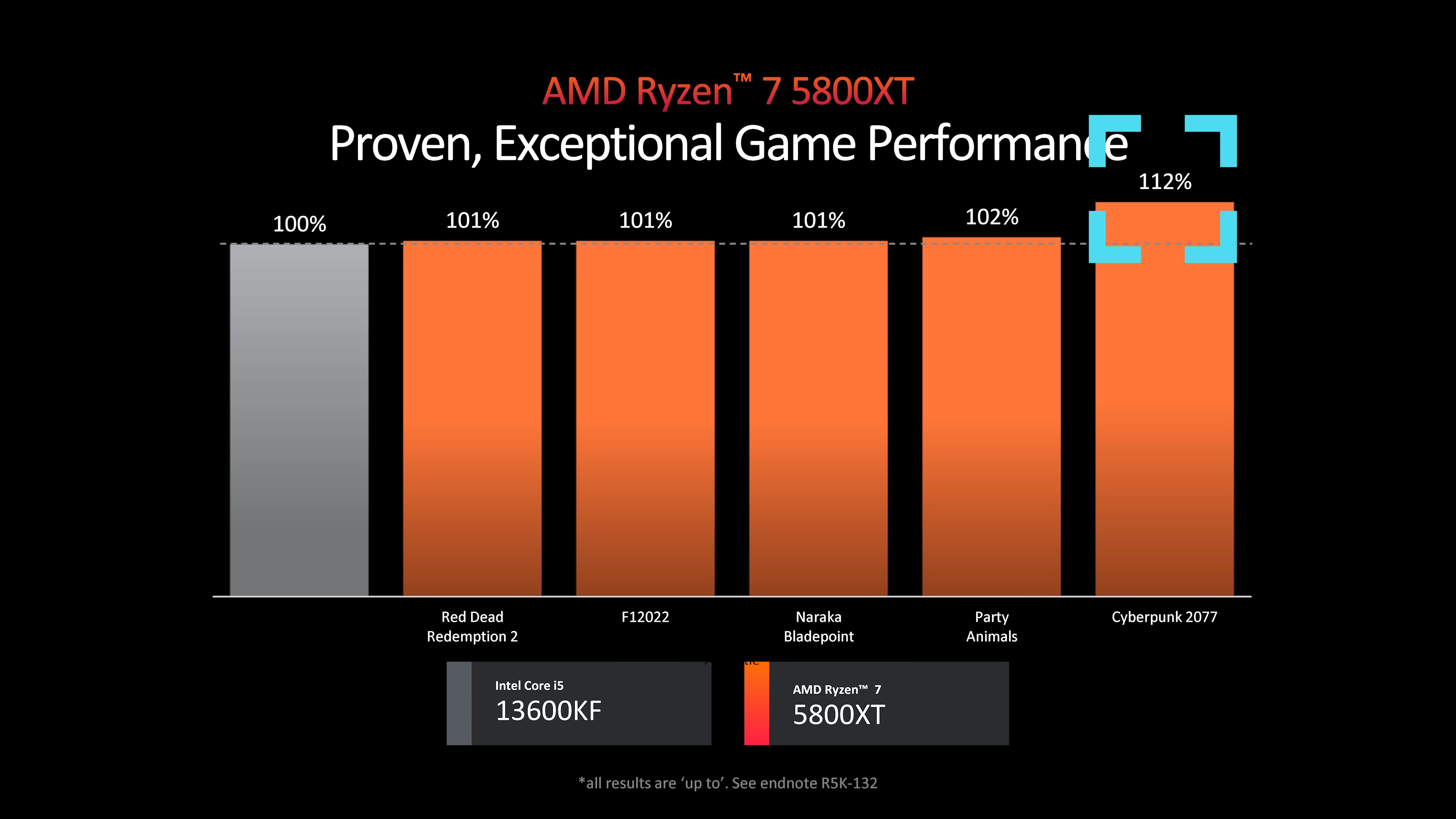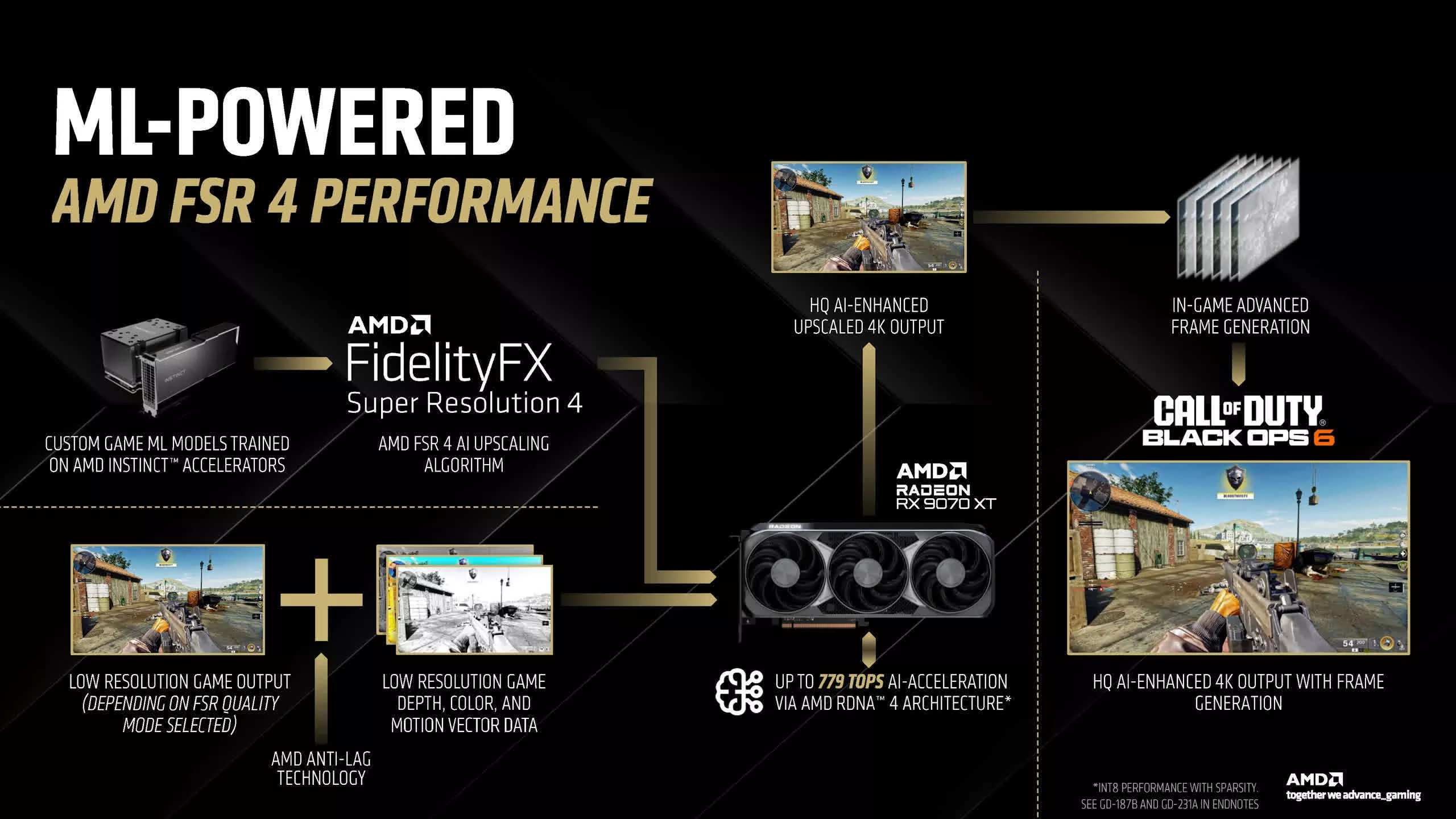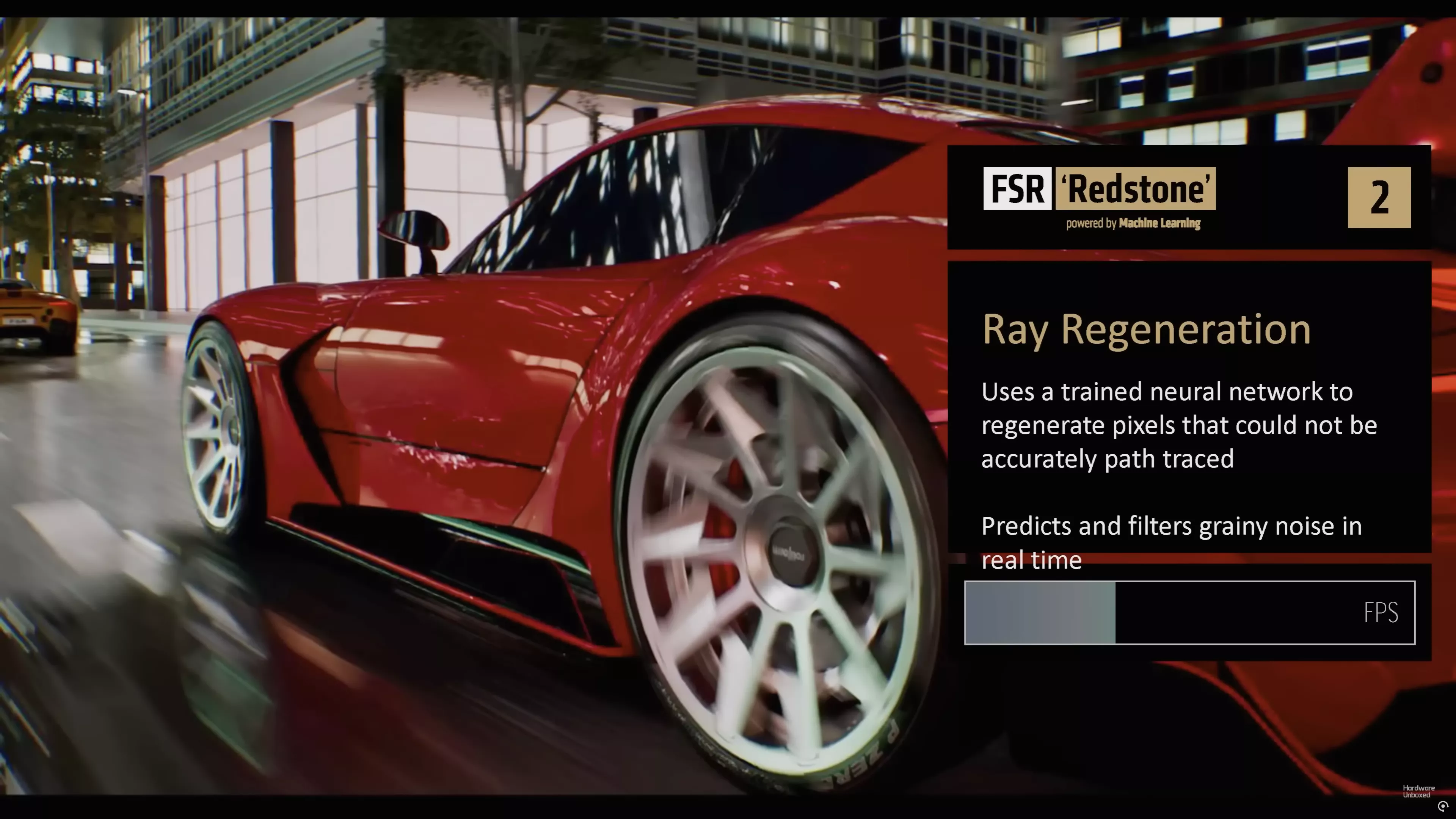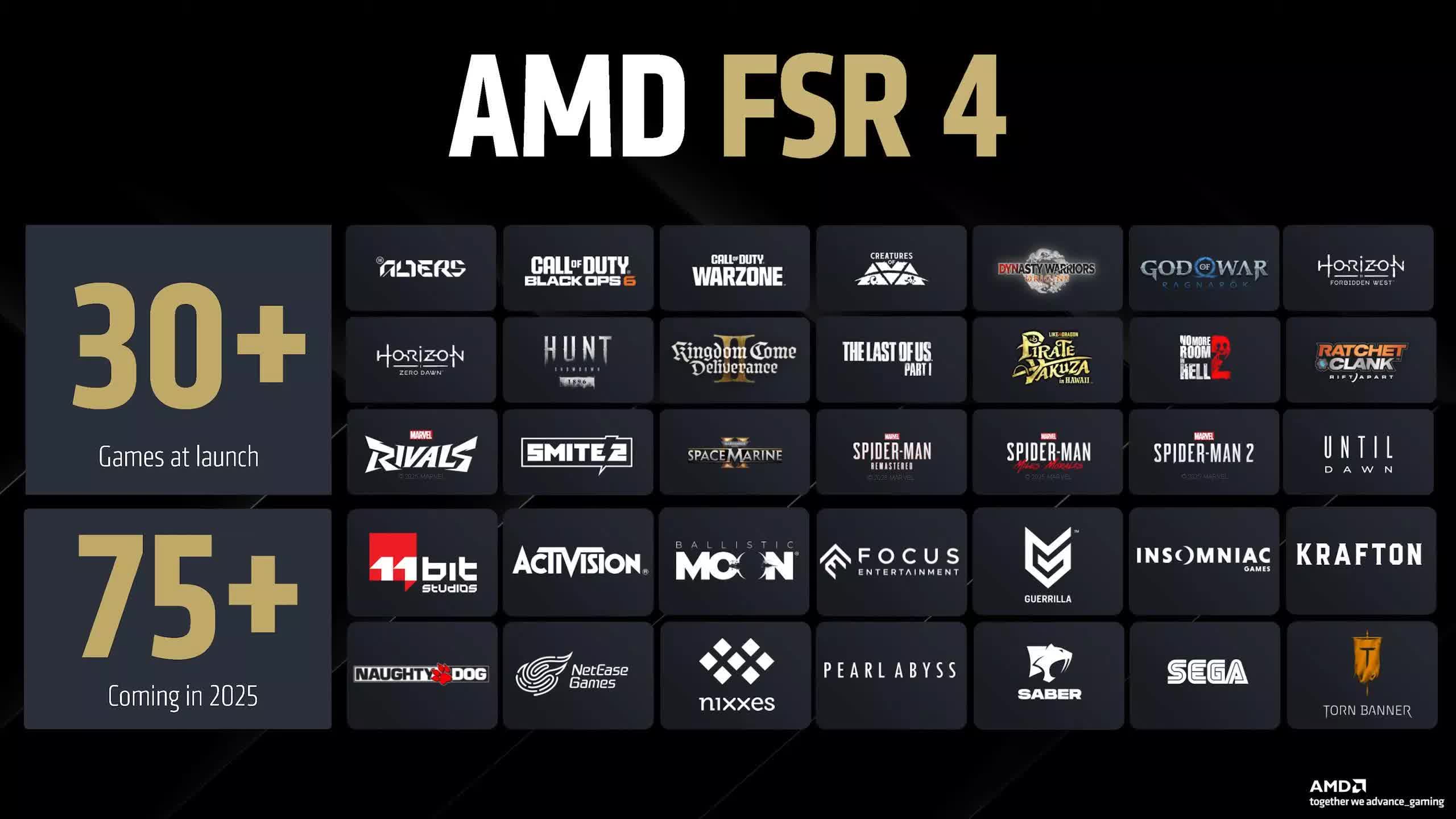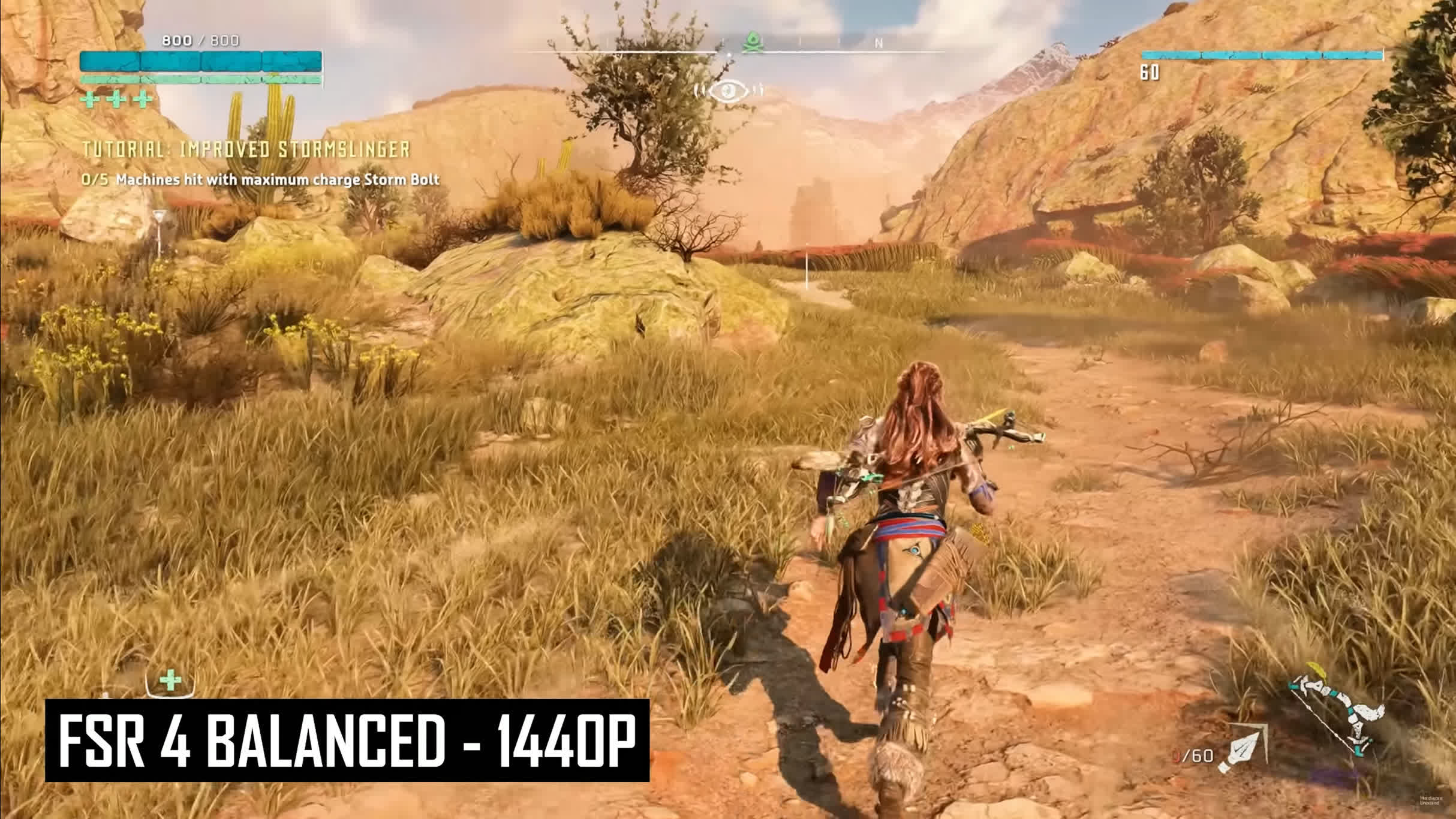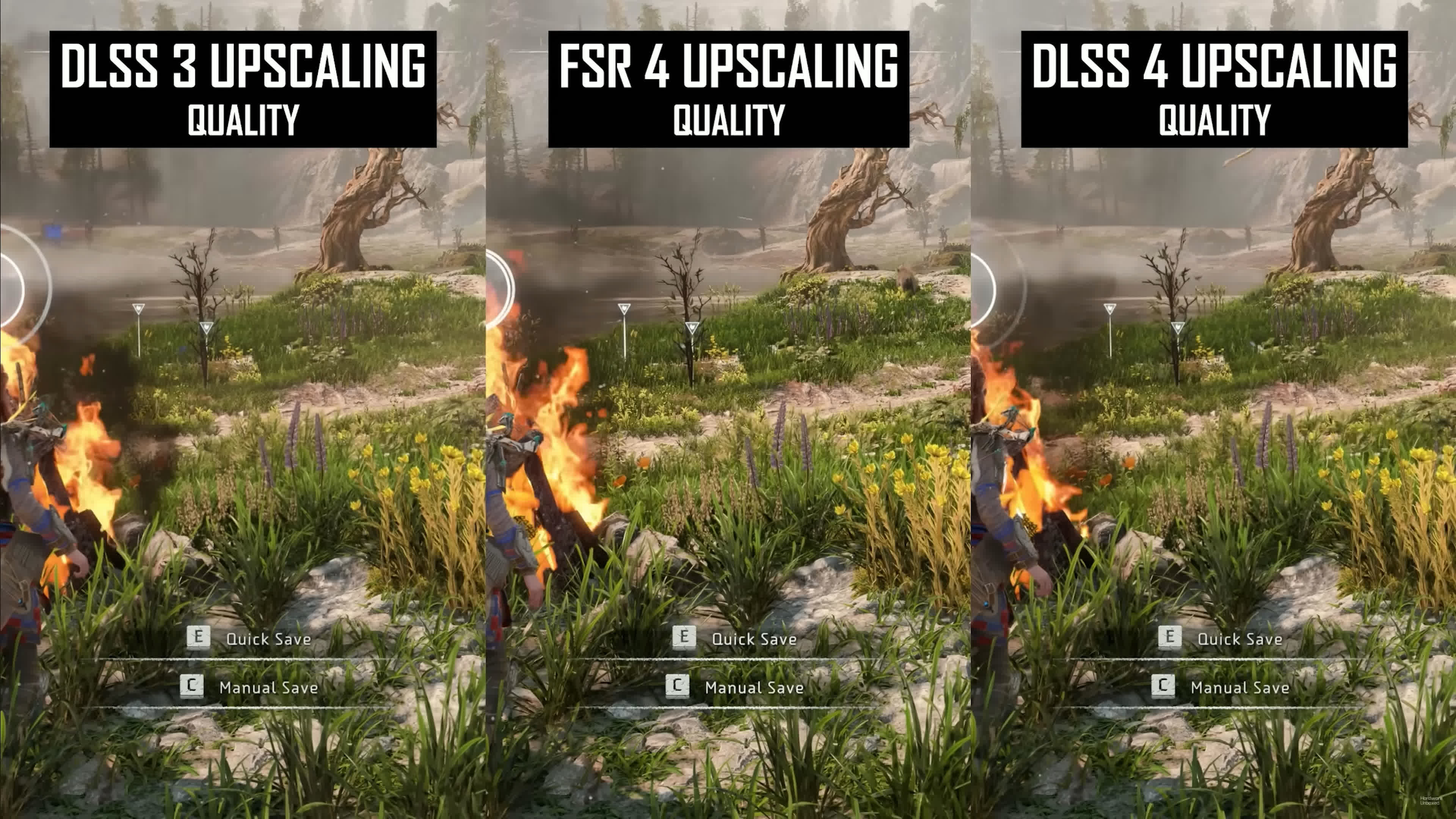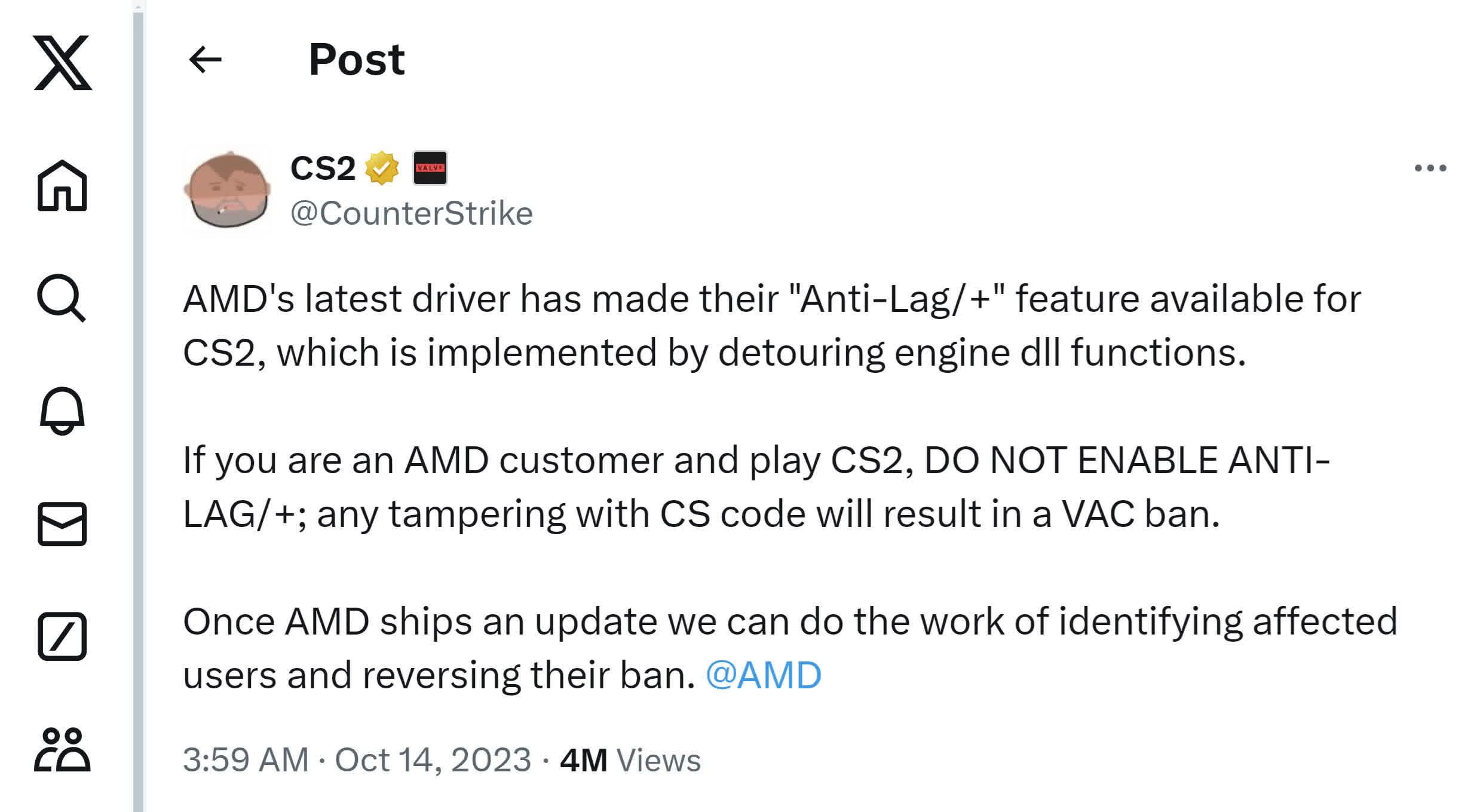About a year ago, we published a piece outlining a series of AMD's biggest self-inflicted wounds. From mispriced GPUs and inflated benchmark claims to overhyping features and launching them in a broken and embarrassing state – there was a consistent pattern of AMD making simple blunders and shooting themselves in the foot.
Today, we are checking in to see whether AMD has learned its lesson. Has the company actually taken this feedback on board and improved the way it handles launches and marketing? With a fresh wave of products now available, this follow-up revisits the same 12 mistakes we called out last time.
From pricing to performance promises, we are taking a fresh look at what has changed, what has not, and whether AMD in 2025 is any smarter than it was years prior, starting with...
Mistake #1: Pricing products out of the conversation
One of AMD's main failings with the previous Radeon GPU generation (RDNA 3) was absurd pricing for several key products. The Radeon RX 7900 XT was the headliner in this discussion: at $900, this GPU never made sense. Its hardware was cut down by at least 15% relative to the flagship RX 7900 XTX, leading to 17% slower gaming performance in our benchmarks. But AMD priced this model just 10% under the XTX, making it basically dead on arrival.
Other models in the lineup were also poorly priced, like the Radeon 7700 XT, a graphics card that was 10% cheaper than the RX 7800 XT but 17% slower. The Radeon 7600 debuted at $270 offering zero improvement over what the previous generation delivered at the time, too. And even the flagship model, the 7900 XTX, was underwhelming at $1,000 after AMD's initial performance claims turned out to be exaggerated.
With RDNA 4, AMD has put themselves in a much better spot, launching the Radeon 9070 XT at $600.
And while that card is tough to actually find at that price, it makes sense in the current GPU market compared to Nvidia's offerings, something you definitely couldn't say about the 7900 XT.
AMD also saw success with the RX 9060 XT 16GB model, priced at $350, which again is a very competitive position against Nvidia's RTX 5060 series. Neither of these cards will need embarrassing price cuts just months after launch due to bad pricing decisions, so in that regard, AMD has definitely learned and improved.
It's not a complete turnaround though. AMD is still struggling to price the entire lineup properly. The main point of contention might be the RX 9070, which is 12% slower than the 9070 XT but only 8% cheaper when comparing MSRPs, making it worse value in cost per frame. But it's not a disaster like we saw the previous gen – the 9070 probably needs to be $50 cheaper, while the 7900 XT should've been at least $150 less.
Then there's the 8GB RX 9060 XT – a product we strongly believe shouldn't exist, or at the very least, shouldn't be $300. But this situation is a bit different. You could say it's poorly priced and should be cheaper, but weirdly enough, it's actually pretty competitive with Nvidia's other 8GB models – in a way the RX 7600 never was.
So we're not giving AMD a full pass here, but we're not giving them a fail either. They've made progress, but there's still room to improve.
Mistake #2: Ignoring feedback and making the same mistake twice
One of our biggest criticisms of AMD in the past was how they kept making the same mistakes over and over – even after getting strong feedback that those decisions were bad. As we just mentioned, they priced the Radeon 7900 XT poorly – got slammed for it with bad reviews and poor sales – and then months later did the same thing with the 7700 XT.
So far, AMD hasn't done that again. The closest they've come is ignoring all the early warnings that the 8GB RX 9060 XT would be a bad idea and either shouldn't exist or should launch at a bargain-bin price. They went ahead with it anyway, but that wasn't a repeat of a previous, well-criticized mistake.
Repeating the same mistakes is rather dumb after clear feedback, so avoiding that trap this time is a win and a sign that AMD has actually learned something.
Mistake #3: Launch decisions that cause negative reviews
This issue is closely related to the previous two around pricing. AMD's strategy with previous-gen launches has been to stuff up the product from the start, ensuring reviews are negative and interest in the products is low. They've tried to eek out a few extra dollars from products like the 7900 XT, but ultimately this has led to lackluster sales as consumers and the media rejected those prices right away.
There has been a clear shift in strategy with RDNA 4 to ensure products launch in a state that leads to positive reviews. The RX 9070 XT was priced at a level where reviewers didn't immediately dismiss it as dead on arrival. In fact, the complete opposite happened: most reviewers praised it!
Now, there was some behind-the-scenes haggling around the final price, and there's been some difficulty actually hitting that price, plus AMD has, to some degree, been playing Nvidia's game – something we'd rather not see.
But there's no doubt this new approach has been far more successful than the old one, and this applies to other models like the RX 9060 XT 16GB as well. Nailing those first impressions is key, and AMD has improved their launches to better set up their products for success.
The only exception might be the 8GB 9060 XT, which did launch to negative feedback. That could have been avoided with a range of different strategies: lowering the price, changing the name, launching at a different time, or just not launching it at all. So we wouldn't say this issue has been fully resolved, but there have definitely been steps in the right direction.
Mistake #4: Slashing prices after the damage is done
When you make any of the previous 3 mistakes we just discussed, you're basically forced to make a fourth one, which is adjusting the product's price soon after launch. Of course, lowering the price of a graphics card to a level where it actually sells is a good move, but the mistake here is doing it after the launch, not before.
This mistake has a knock-on effect. It means customers lose confidence in launch pricing. If they know AMD will just lower prices after a few months, they won't buy at launch – they'll wait for the drop.
That leads to lower profit for AMD and gives competitors the chance to swoop in and take the sale. Establishing a good price from the start gets sales right away, and if that price holds – like Nvidia does – customers know they won't get a better deal later. If anything, the best deal is buying the card the moment it comes out, and that's something AMD has failed to deliver in the past.
So far, AMD hasn't needed to adjust the position of their products because no damage has been done and sales have been strong. We can tick this one off as an improvement from Team Red.
Mistake #5: Chaotic last-minute changes
This mistake specifically related to the Radeon RX 7600 from the previous generation, although that's not the only time AMD has made last minute changes to a GPU. What happened is that reviewers received the card expecting it to be priced at $300, and then, right before reviews were set to go live, AMD changed the price to $270 and did a poor job communicating that.
Some people weren't told of the change at all and published reviews based on the wrong, less attractive price. Others, like us, had 90% of a review completed based on the original price and had to scramble to update it – though it didn't make much difference since the product was still bad.
Setting the right price before launch is good. Changing the price to a better one before launch is also good. But those changes need to happen well before the launch, not 24 hours out. You want the launch to go smoothly, not be filled with miscommunication and confusion.
Based on what we've heard, there were definitely some last minute discussions about the Radeon 9070 XT's price, but importantly, this all happened before the product was officially announced. So it didn't impact anything.
There was no miscommunication with the media, no reviews or news published with the wrong price – it was a smooth launch where everyone had time to digest the information. Across RDNA 4 so far, it looks like AMD has learned their lesson on this one.
Mistake #6: Overhyping product performance
AMD made this mistake several times across the Zen 5 and RDNA 3 launches. When announcing the Radeon 7900 XTX, they claimed the part was up to 1.7x faster than the RX 6950 XT while gaming at 4K, and 55% faster on average. However, in our benchmarking, we found the card was just 35% faster than its predecessor, which made it look a lot less attractive at its $1,000 price point.
AMD repeated this when they claimed the Ryzen 7 9700X would be 13% faster than the Intel Core i7-14700K on average when gaming, but our day-one testing found the Intel part was 6% ahead on average. AMD also claimed the 9700X would be a couple of percentage points faster than the 7800X3D, which also turned out to be false. Like with the 7900 XTX, this led to lackluster, underwhelming reviews because Zen 5's actual performance didn't meet the claims.
Across the RDNA 4 launch so far, AMD has been much more accurate with the data they've presented to everyone, which has stopped an overhype-then-underwhelm situation from playing out.
In the RX 9070 XT day-one review, AMD claimed the RX 9070 XT was 2% slower than the RTX 5070 Ti on average at 4K gaming. In our day-one review, we found it was 1% slower – a much more accurate result than the 7900 XTX's launch. AMD also claimed the RX 9060 XT offered similar performance to the RTX 5060 Ti, and that turned out to be largely true as well based on our independent testing.
Clearly this is an area AMD has worked on, and helping the situation is the fact the products they're advertising are just better, so the real results can mostly speak for themselves. Either way, not a mistake they've made this generation.
Mistake #7: Not knowing how to benchmark their own products
One of the main problems that caused the overestimation of product performance in advertising slides was AMD's inability to properly benchmark their own products (believe it or not).
Across the Zen 5 data, there were some really strange results they presented to the media in the review guide – numbers that didn't make sense, testing configurations that didn't make sense, and a heavy reliance on poor quality canned benchmarks. This led to Zen 5 gaming data that was wrong and painted an inaccurate picture of how it compared to Intel and older Zen products.
This hasn't been an issue with the RDNA 4 launch in 2025 because AMD have moved to using a larger number of games in their marketing materials. They're testing more relevant and more recent games, and they've made a real effort to improve the accuracy of their data. That's really good to see.
Mistake #8: Misleading benchmarks that get exposed
This one relates to AMD's advertising of the Ryzen 7 5800XT and Ryzen 9 5900XT, where they benchmarked these CPUs using an entry-level Radeon RX 6600 graphics card. That bottlenecked the system and created GPU-limited results.
There also appeared to be testing errors, leading to laughable results like the 5800XT being 12% faster than the 13600KF in Cyberpunk 2077. We showed the Core i5 part was actually about 33% faster on average when tested properly without a strong GPU limit.
This sort of mistake is different from just poorly benchmarking products and overestimating performance, because this one looked like a deliberate misconfiguration of the benchmark system to make the product look way better than it really was.
Other misleading benchmarks – like the 7900 XTX and Zen 5 examples – seemed more like benchmarking incompetence or honest mistakes. We don't like seeing deliberate efforts to exaggerate performance either, and if anything, this is a worse mistake, because once it gets exposed, it really hurts your reputation.
Across AMD's 2025 launches so far, we haven't seen this mistake repeated. The benchmark data we've been given has been accurate, with no deliberately bad test setups. Let's hope that continues.
Mistake #9: Announcing features way too early
In response to Nvidia's DLSS Frame Generation that launched with GeForce 40 series GPUs, AMD announced FSR 3 alongside RDNA 3 in November 2022. But they didn't actually release the feature until 11 months later, after a ton of frustration over why it was taking so long, and after buyers had purchased RDNA 3 GPUs expecting to use the feature much sooner.
With present products we don't seem to be in a position where AMD have announced a new feature way too early. The initial RDNA 4 reveal with the RX 9070 XT focused almost entirely on features that would be available day one – like FSR 4, better video encoding, and new stuff added to Radeon Software. No promising something and then failing to deliver it for nearly a year.
There is still a bit of a question mark around FSR Redstone, which is an upcoming suite of technologies that includes neural radiance caching, AI-based ray regeneration, and AI-based frame generation.
This was announced alongside the RX 9060 XT with an expected release window in the second half of 2025. As long as AMD actually hits that target, it won't be a repeat of announcing a feature way too early. For now, things are going well in this area.
Mistake #10: Debuting features in games no one plays
When releasing brand new graphics features that are the cornerstone of your GPU software offering, you want those features to be in high quality games people actually own and are interested in playing.
AMD failed to do this with FSR 3, launching the feature in an embarrassing fashion. It slid out with very little fanfare in two poorly received titles that few people wanted to play: Immortals of Aveum and Forspoken. In contrast, Nvidia were able to get their new tech into major flagship titles, like Cyberpunk 2077.
Launching in irrelevant games hurt AMD's brand perception, and that's why it was a mistake to debut FSR 3 in the games they did. Nvidia tries very hard to maintain their image as a leader in gaming, and they do this by ensuring major titles support RTX features. Back with RDNA 3 and FSR 3, AMD needed to do the same.
This is another area where AMD have made significant improvements. FSR 4, through their driver upgrade feature, launched day one in dozens of titles including major games people actually owned. This included Horizon Forbidden West, The Last of Us Parts 1 and 2, Call of Duty Black Ops 6, and more. And on top of that, they've kept up a much better pace of adding FSR 4 support to new titles. This year it's come to Stellar Blade, Kingdom Come Deliverance II, Oblivion Remastered, and Assassin's Creed Shadows, to name a few.
When gamers buy a GPU, they want to know key features like FSR 4 will be supported across a broad range of games when they play them. So far, AMD have done a much better job delivering this than they did with previous iterations of their graphics features.
Mistake #11: Releasing features that just don't work
Yet another other mistake AMD made with FSR 3's launch was releasing it in a broken state. The implementation in the two launch titles had frame pacing issues in a variety of configurations, which was a big letdown. This meant the first taste gamers got of FSR 3 (after nearly a year of waiting, if they even owned the two supported titles) was something substandard and not fully functional.
The launch of FSR 4 was much different. FSR 4 worked flawlessly from the start. It delivered superior image quality and great performance. Anyone buying a new RDNA 4 graphics card would have gotten a solid experience in the first FSR 4 title they tried.
First impressions are important, especially for gamers who might have come from an Nvidia GPU that supported DLSS, which works really well. Safe to say, this mistake has been fixed.
Mistake #12: Breaking games with poorly implemented features
The final mistake revolves around AMD Anti-Lag+, which broke games. Essentially, this was a version of Nvidia Reflex, except instead of being integrated into the games themselves, AMD injected Anti-Lag+ into games via the driver.
This triggered anti-cheat detection in major multiplayer titles like Counter-Strike 2 and Apex Legends, exactly the kind of games where you'd want to use Anti-Lag – causing some users to get banned.
After this embarrassing mistake, AMD pulled the feature. Eventually, the banned gamers were unbanned, and Anti-Lag+ re-emerged as Anti-Lag 2, now requiring game integration.
This sort of avoidable error hasn't occurred with the launch of RDNA 4's features. While FSR 4 doesn't require game integration itself, it relies on existing FSR 3.1 integrations, and the driver upgrade feature isn't breaking games as far as we're aware. AMD is also keeping a whitelist of supported titles and are updating this list when games are proven to work, which is a good approach. So this is another area where it's safe to say AMD have improved significantly.
Keeping Score
Across the 12 mistakes we've revisited here, AMD seems to be avoiding making the same mistakes in 2025 in the vast majority of cases. Their in-house benchmarking is more accurate. Their marketing is less noisy and more grounded. FSR 4 launched in actual games people want to play, and it worked out of the box.
We didn't see the same rollout chaos, last-minute pricing flips, or wild performance claims that defined earlier Radeon launches. In short, AMD seems to have stopped tripping over its own feet. That doesn't mean they've nailed everything. The Radeon RX 9070 still echoes some of the pricing missteps of the past, and the RX 9060 XT 8GB remains hard to defend. But those feel more like isolated fumbles, not a pattern of self-sabotage.
In our opinion, this shows AMD has reversed a trend of botching launches. Their marketing division looks more confident, more measured, and, most importantly, more in touch with reality. Let's hope it stays that way.
